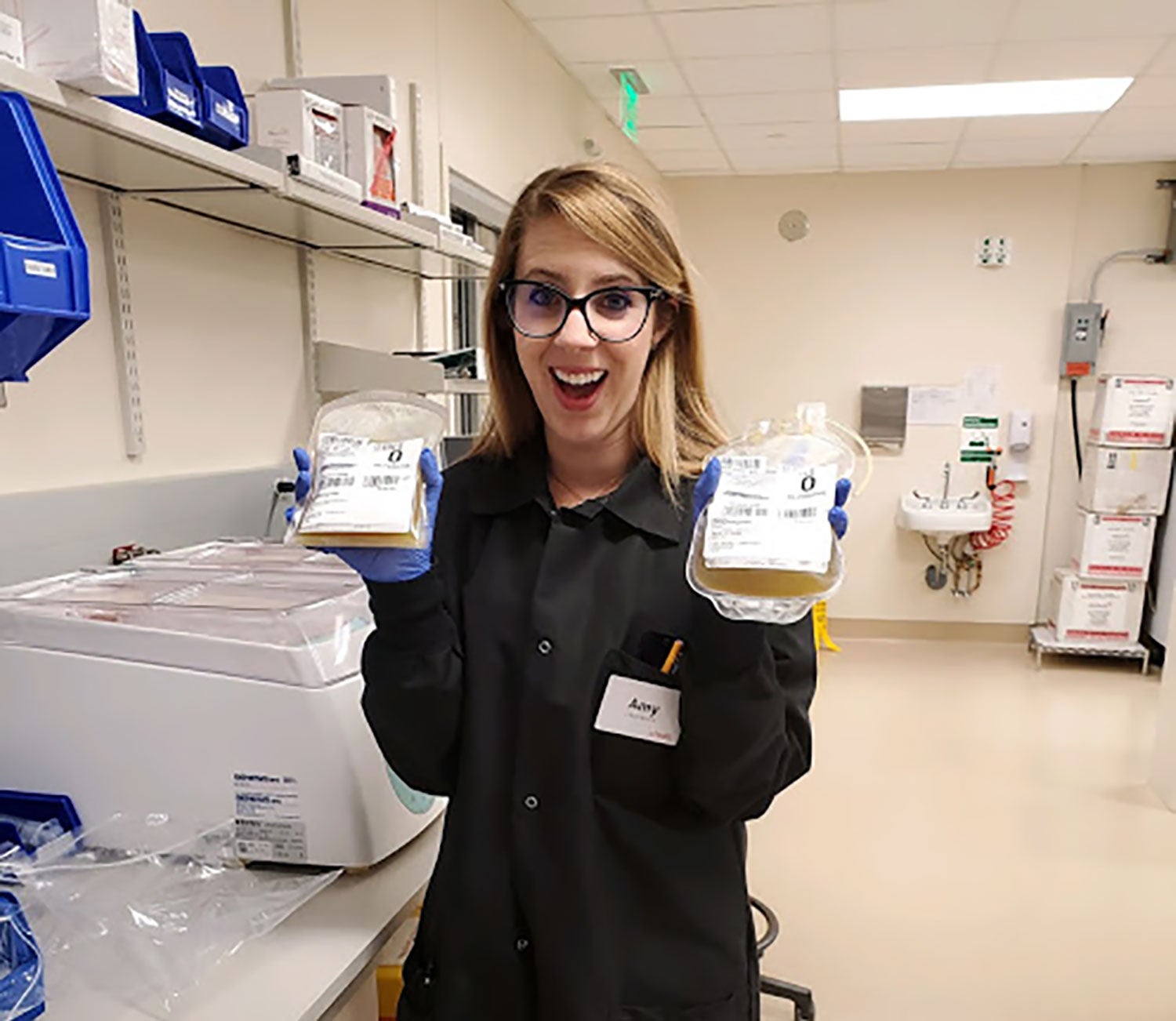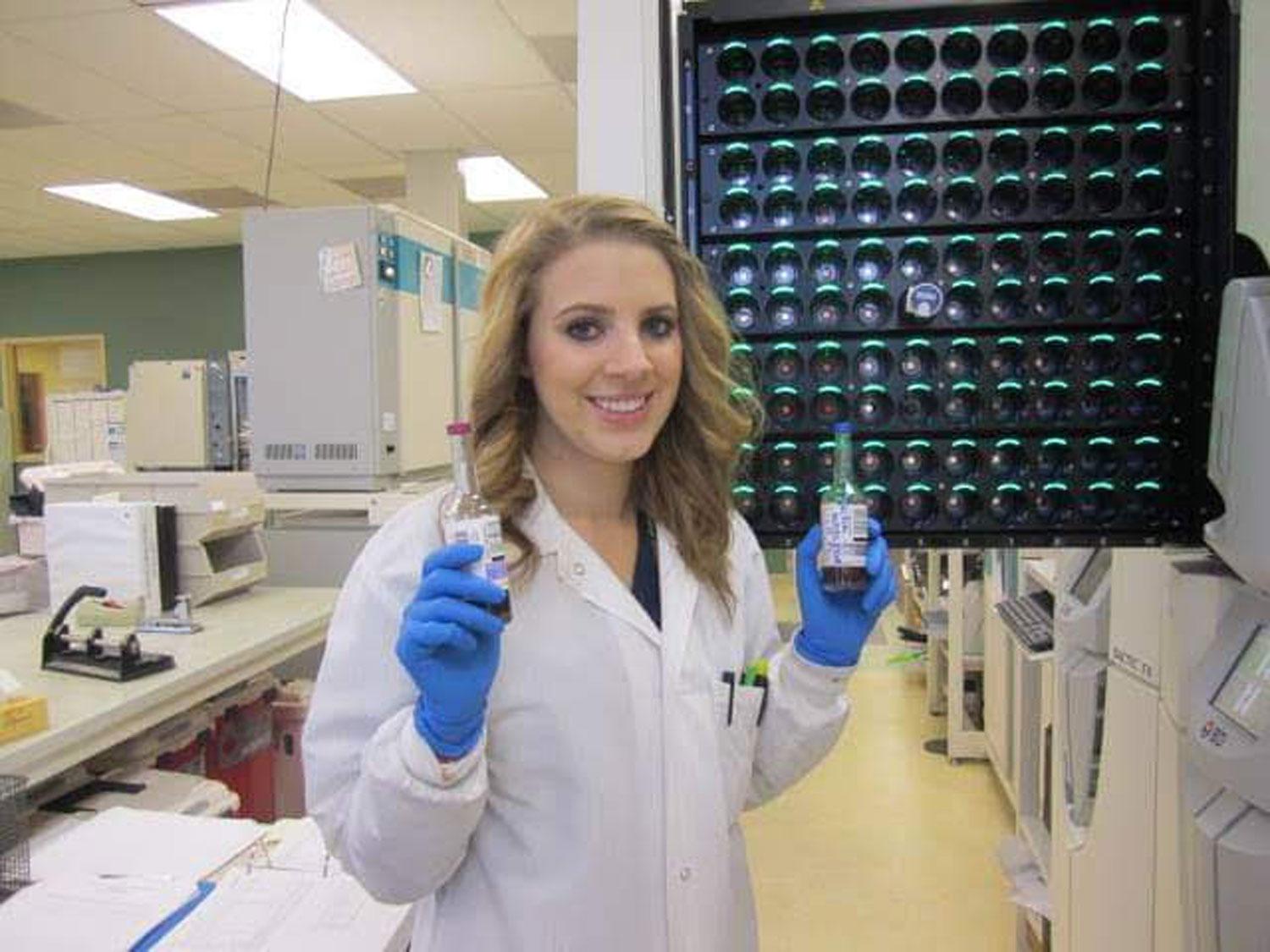
Twins Cara (MCDBio'11) and Amy Faliano (MCDBio'11) have been on the frontlines of the COVID-19 pandemic in the labs of the UC Health system: Cara is the coordinator of laboratory safety for UCHealth in the Denver Metro area, and Amy is a lead medical laboratory scientist at UCHealth's Highlands Ranch community hospital. Here, the sisters discuss their love for biology, what it’s like working in separate labs and the benefits of having each other.
What drew you to biology and medical testing?
Cara: Amy and I have loved science since we were little girls. Our mom used to take us to the library and we'd check out stacks of books at a time. We stayed study buddies throughout our schooling and found that biology, specifically things on the microscopic level, sparked our interest the most, so studying MCDB at CU was an easy choice for both of us.
What was your favorite thing at CU Boulder?
Cara: Having a Division 1 football team to support was a dream for both of us. We never missed a football game and attended a lot of basketball as well — and still love to go watch CU play.
Amy: I loved the extracurriculars, like sports games, giving campus tours and being in CU Collegiate Chorale.

Amy Faliano
When did you first become concerned about COVID-19?
Cara: I help manage the special pathogens unit in my hospital, so I'm always reading about infectious disease news. I would say around Christmas is when COVID-19 really started to catch my attention, because it's well-known that a SARS-like or flu-like respiratory illness would be the next "pandemic" and this seemed mysterious enough to fit the bill.
What COVID-related questions have you been getting most from friends and family?
Cara: We're getting a lot of questions about how the testing works, which is great! Lab testing and medical laboratory science has always been one of the less-talked-about fields in the medical world, so it's been great to have a spotlight shined overall on the great work that clinical labs do to support patient care.
Amy: A lot of friends and family who have reached out had questions about how the testing is performed, what the results look like. One of my aunts just had to know if the novel coronavirus really looks like the "spiky ball' picture she has seen on the news. The answer is yes, that is what it looks like under an electron microscope.
Cara Faliano
What has it been like working through this difficult time?
Cara: Like anyone in healthcare would say, this has been a very tiring and trying couple of months of hard work, rapid changes and adapting to the situation as it develops. I've personally been involved on the more administrative side of the laboratory, so I've re-written the lab's "COVID-19" procedure more times than I can count, have been tasked with things like helping to create drive-thru testing locations, have had to find creative new inventory for the lab to use in supply chain shortages — like 3D-printed swabs — and have been managing the inventory of testing supplies for the entire hospital system. Everyone is wearing many hats in this pandemic, and it's been a scramble for all in the lab.
Amy: I am a leader in the laboratory at UCHealth Highlands Ranch Hospital, a community hospital in the UCHealth system. I had to quickly validate new testing for COVID-19, train all staff and figure out how to balance that testing with all of our normal testing for patients seen at our hospital and clinic. It was stressful to have to get the validation paperwork and new procedures at a rapid pace, and I have worked a lot of long hours.
You both worked in blood banks during the 2012 Aurora movie theater shooting. What was that like?
Amy: We both got called into work the night of the shootings and came to the hospital blood bank right away. That was a crazy night of assisting in testing and preparing blood products for a mass-casualty situation, but definitely affirmed my decision to go into the career field. What the hospital laboratory does is so important, and this pandemic is another reminder of that.
How has having each other been therapeutic?
Cara: My work on the admin side directly impacts Amy in her lab, as her lab follows the procedures I've written and uses the same materials, so we've been able to brainstorm together on some things or bounce questions off of each other.
Amy: Through the stress of the pandemic it was nice to have someone who was there for me, and understood how hard it was to have to continue working as if things were business as usual. Cara understood how physically and mentally exhausting it was to have to work hard and work long hours. I needed her to vent to, but also to inspire me to go work hard again the next day since we were in this together.
Both of you went to the same university, same degree, same career field — just how competitive are you two?
Cara: Neither of us have a competitive bone in our bodies! We've always been really supportive of each other and want the other to do well.
Amy: I agree with that! It makes sense that we ended up in similar careers since our love of science has always been the thing that bonded us. I think we used our different strengths to find our niches in the career field, no competitiveness there.
What's one common misconception about being a twin?
Cara: I think people sometimes love to assume that we do everything together since we're in the same career field. We've rarely worked directly together, and have our own lives and interests outside of work. We're just like any other really close friends!
Amy: I don't think twins are that different from any other siblings who are close.
Interview condensed and edited.
Photo courtesy Cara Faliano




